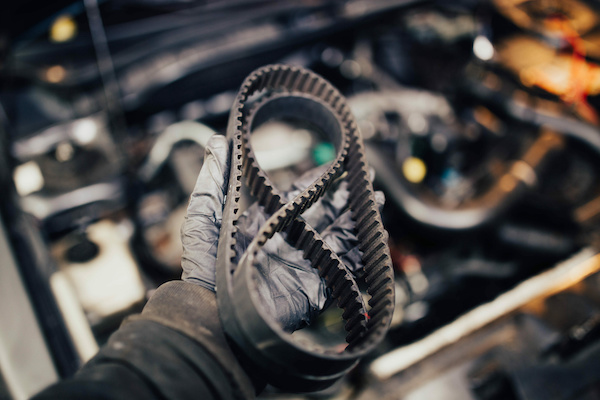
A timing belt is a rubber belt with ribs that helps the engine run smoothly by connecting the camshaft(s) and crankshaft. The camshaft is a part of the engine that spins to open and close the valve. Meanwhile, the crankshaft enables the pistons to move up and down. The belt helps to keep both these parts stay in sync.
What Happens When You Don't Replace the Belt On Time?
In most cases, the timing belt breaks due to poor vehicle maintenance. The timing belt will wear downr over time because its rubber materials are constantly exposed to high engine temperatures. Naturally, it causes the belt to lose its durability and texture, which results in snapping. This is why mechanics stress the importance of following your manufacturer's guidelines on when to replace the timing belt. You can find more instructions in your owner's manual as well.
Common Signs of a Worn Out Timing Belt
- Time and mileage (based on the manufacturer's stated intervals)
- Water pump damage or leak
- Engine cranks but doesn't start
- Ticking sounds
- Timing tensioner leakage
- Engine misfires and rough idling
The Replacement
Because a timing belt replacement is a labor-intensive task, it can cost up to hundreds or over a thousand dollars. The cost can vary on whether you choose to use authentic dealership parts or a more cost-efficient option. You can also expect the service to take up to several hours, as it requires meticulous work.
For those handymen and handywomen out there, you may be wondering if you can do this job at home. It's highly recommended to have your timing belt replaced by a professional technician or mechanic. This is because you will need the proper tools, skills, and knowledge to get the job done accurately. If the replacement is not done correctly and the timing is still off in your car, SUV, or truck, it can result in more extensive engine damage.
For timing belt replacements in Houston, TX, look no further than the experts at Elite Auto Experts.